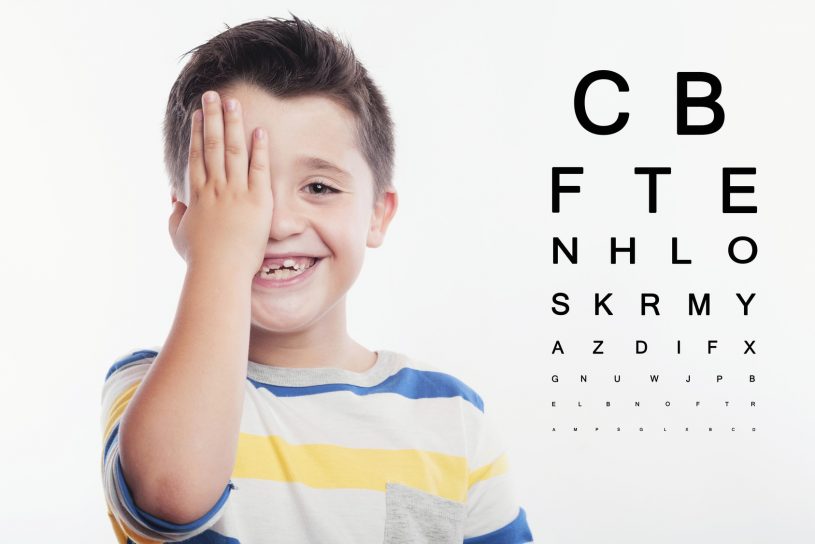
Hyperopia in children is a refractive error that occurs because the anteroposterior axis of the eye is short, causing the image of an object located at infinity to be projected behind the retina.
Hyperopia is physiological, meaning that all individuals are born with hyperopia. It naturally corrects itself as the eye grows.
Children, with their powerful accommodation, can compensate and achieve good visual acuity if hyperopia is not very high.
Visual accommodation is the ability of children’s eyes to adjust their focusing power based on the distance of the objects they are looking at, in order to see them clearly.
When is it necessary to treat hyperopia with glasses
When the degree of hyperopia is high, typically greater than 5 diopters, visual acuity is often not appropriate for the child’s age, and it becomes necessary to treat hyperopia with glasses.
A child with similar hyperopia in both eyes usually achieves good visual acuity but may experience asthenopia, characterized by the onset of symptoms such as headaches, red eyes, and a lack of interest in activities that require effort for close-up vision. As a result, they may encounter difficulties in their school learning.
Asthenopia in children is the onset of symptoms such as headaches, red eyes, and a lack of interest in activities that require effort for close-up vision.
However, the problem arises when a child’s two eyes do not have the same prescription, which can lead to amblyopia, commonly known as ‘lazy eye.’ The issue with amblyopia is that it can result in a varying degree of visual acuity loss, ranging from mild to profound, and if not treated in a timely manner, it can be irreversible.
A ‘lazy eye’ is one that, even without visual defects or pathologies, does not achieve 100% visual acuity.
Childhood hyperopia can be latent or manifest. Typically, ophthalmologists dilate the eyes with cycloplegic agents and determine the total hyperopia. However, when prescribing glasses for children, if there is no deviation, one or two diopters are usually subtracted from the total hyperopic defect. This is because children have a significant accommodation capacity, which compensates for some of the hyperopia, making them more comfortable with glasses.
Childhood hyperopia can be latent or manifest. Generally, ophthalmologists dilate the eyes with cycloplegic agents to determine the total hyperopia. However, when prescribing glasses for children without strabismus, one or two diopters are typically subtracted from the total hyperopic defect. This is because children have a high accommodative capacity, which compensates for some of the hyperopia and makes them more comfortable with glasses.
Can hyperopia be cured in children?
Yes, hyperopia is physiological; therefore, all children are born with hyperopia, and in most cases, it gradually corrects itself as they grow.